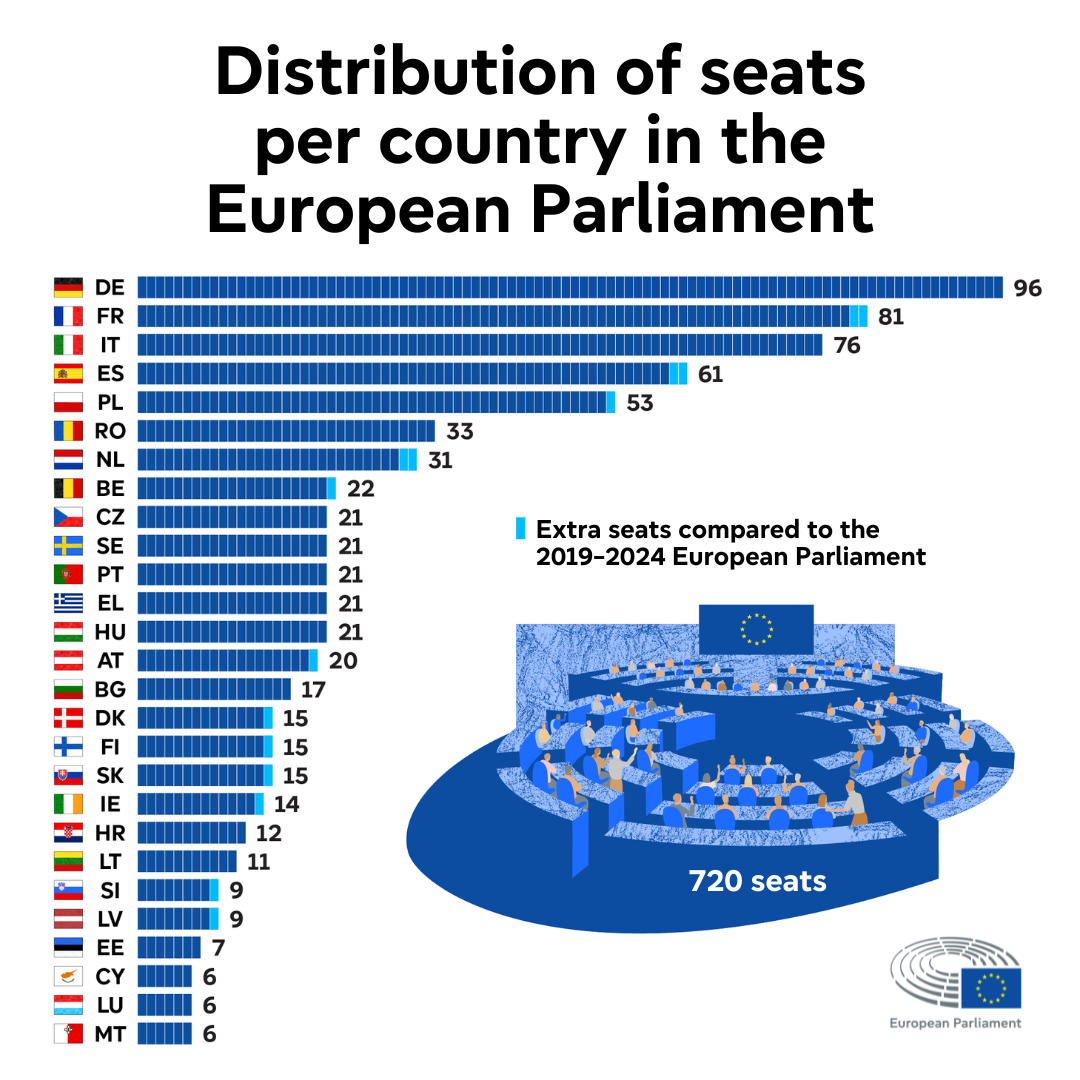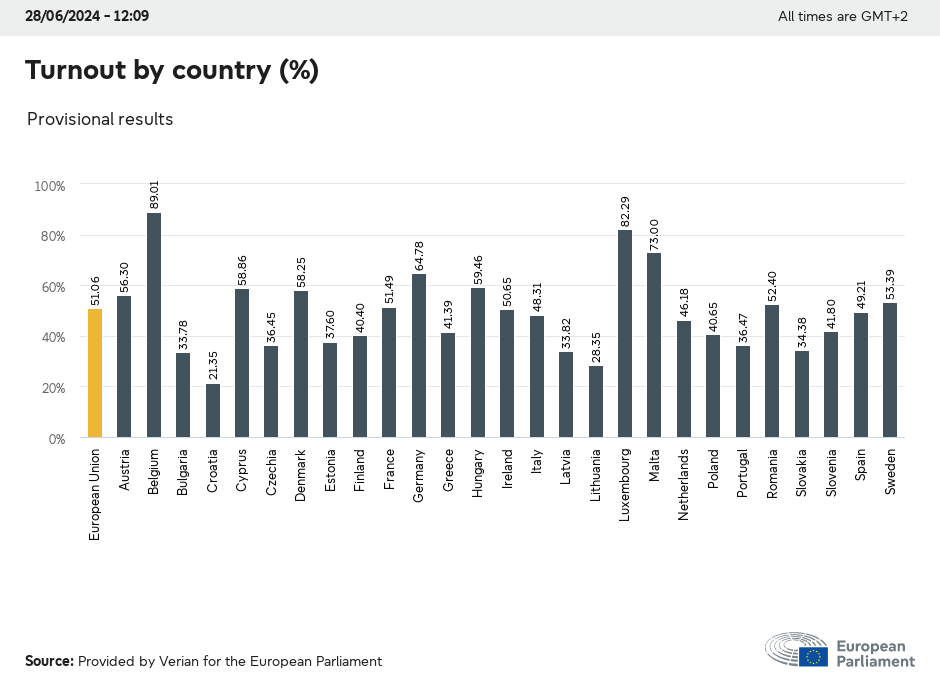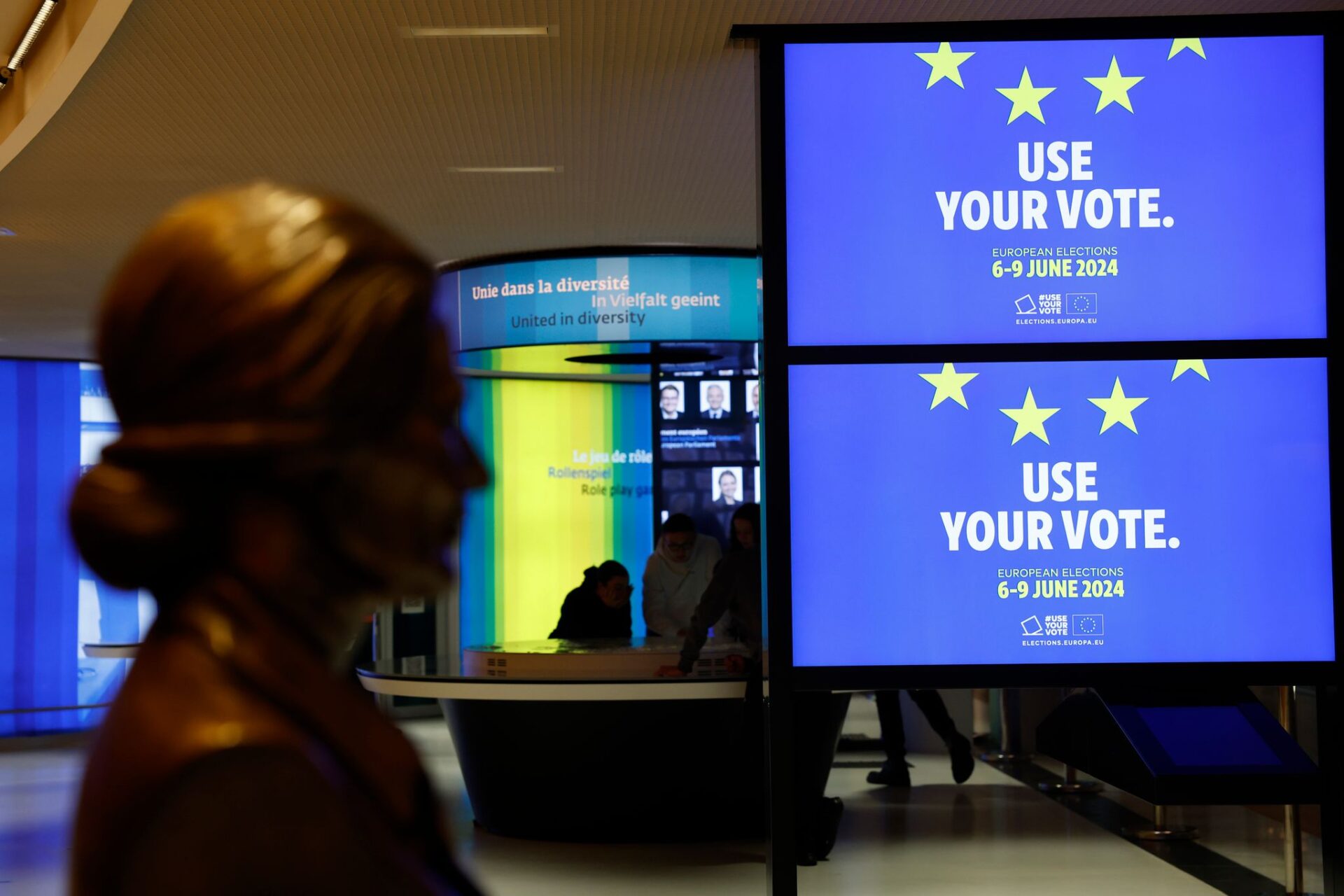On 6-9 June, 2024, voters from across the European Union went to the polls to elect the next 720 members of the European Parliament. According to provisional results and data from the European Parliament, 51.06 percent of eligible voters cast their ballot in the 2024 European Parliament elections.
The figure shows a slight increase compared to the 2019 elections (50.66 percent) and is the highest since 1994 (56.67 percent). However, almost half of the EU’s eligible voters did not participate in the vote for the bloc’s only directly elected institution representing their interests.
“From the first direct elections in the 1970s to the ones in 2019, participation decreased all the time – again and again and again,” said Stefan Lehne, Senior Fellow at Carnegie Europe in an interview with the European Newsroom (enr). “The big exception was the 2019 elections when it shot up by about 10 percent,” he added.
“The fact that the relatively high level of 2019 was maintained indicates that the EU is relevant for the life of the people,” Lehne said. However, he added: “The fact that basically all national parliamentary elections see a much higher participation rate shows that still national politics has primacy over European politics.”
Who did EU citizens vote for?
Out of the 720 seats in the Parliament, each of the 27 EU member states is given a fixed amount, which is decided before the elections begin and takes into account the size of each member state’s population.
The seats are filled by national representatives (MEPs) from different political parties, who are directly elected by EU citizens. In September 2023, MEPs approved EU leaders’ decision to increase the total number of seats from 705 to 720 for the next legislative term.
The maximum number of seats to be granted to a country is 96. This is the case for Germany, which has more than 84 million inhabitants. The second largest country, France, has 81 seats with a population of about 68 million.
To ensure that EU citizens from all member states are given a minimum level of representation, the lowest number of seats per country is set at 6. This is the case for the bloc’s smaller countries such as Malta, Luxembourg and Cyprus. Malta has around 500,000 inhabitants, Luxembourg around 650,000 and Cyprus almost 1.3 million.

Gap in turnout rates across EU
The motivation of EU citizens to go to the ballot box and choose their representatives remains low for the EU, and “there are huge differences between member states” when looking at the turnout rates across the bloc, Lehne pointed out. “Particularly in the Central and Eastern European states, the participation rate is still considerably lower than in the rest of Europe”.
The lowest voter turnout was recorded in Croatia with 21.35 percent, even lower than the already low turnout of 29.85 percent in 2019. Lithuania (28.35 percent compared to 56.48 percent in 2019) is the only other EU country with a voter turnout below 30 percent.
The highest turnout was recorded in Belgium, where voting is compulsory under the country’s constitution. In Belgium, federal and regional elections took place on the same day as the European elections (9 June). The second and third highest turnout were recorded in Luxembourg (82.29 percent compared to 84.24 in 2019) and Malta (73 percent compared to 72.7 percent in 2019).

This article is part of the enr’s EU Elections Spotlight: The EU after the European elections. The content is based on news by agencies participating in the enr.
